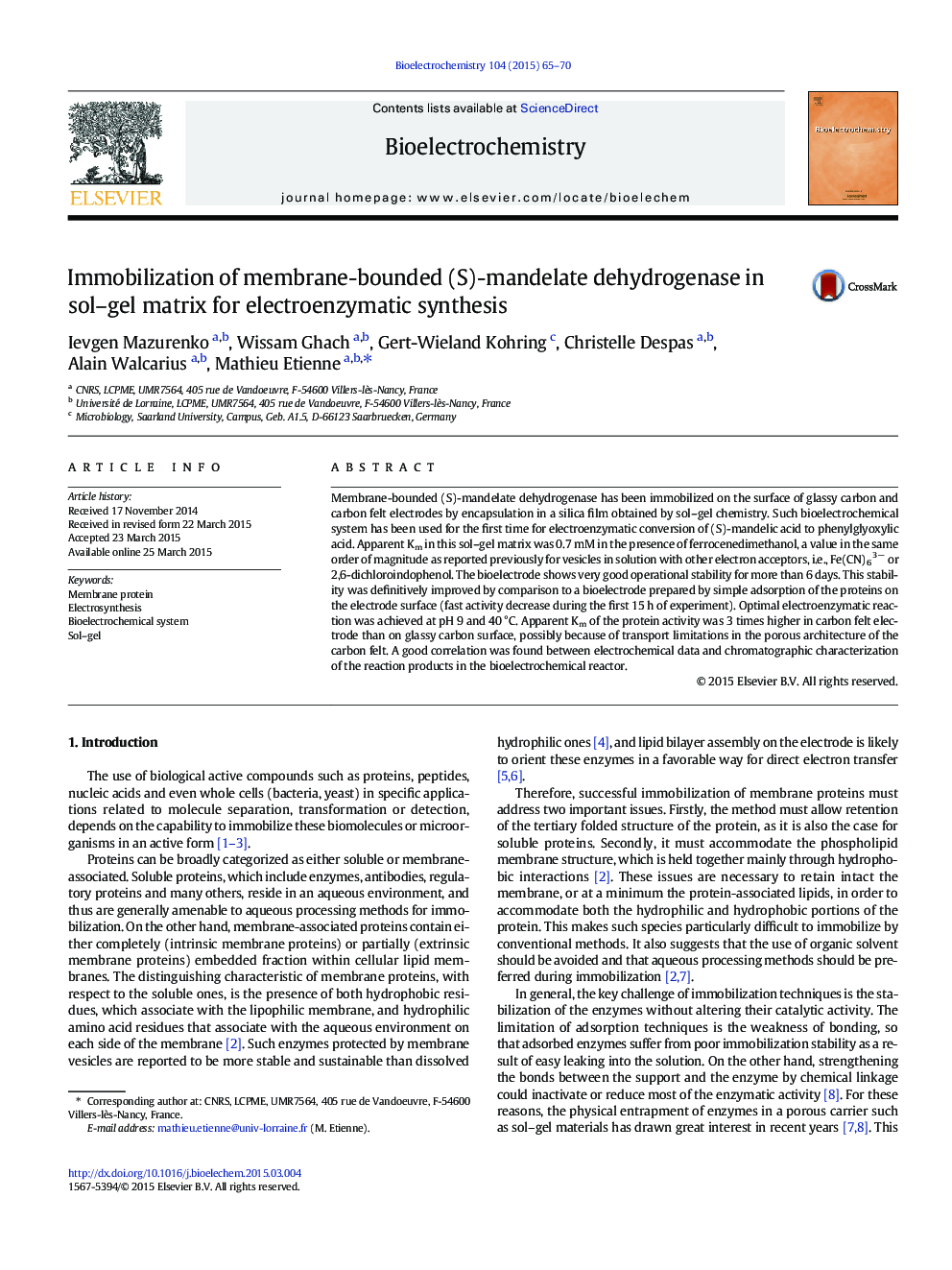| Article ID | Journal | Published Year | Pages | File Type |
|---|---|---|---|---|
| 1267792 | Bioelectrochemistry | 2015 | 6 Pages |
•First immobilization of membrane-bounded dehydrogenase in sol-gel film on electrode•Apparent Km in this silica gel film was 0.7 mM in the presence of ferrocenedimethanol•Optimal electroenzymatic reaction was achieved at pH 9 and 40 °C•The protein was active in the silica gel for more than 6 days of continuous use•Bioelectrochemical reactor achieved 94% of (S)-mandelate conversion within 9 hours
Membrane-bounded (S)-mandelate dehydrogenase has been immobilized on the surface of glassy carbon and carbon felt electrodes by encapsulation in a silica film obtained by sol–gel chemistry. Such bioelectrochemical system has been used for the first time for electroenzymatic conversion of (S)-mandelic acid to phenylglyoxylic acid. Apparent Km in this sol–gel matrix was 0.7 mM in the presence of ferrocenedimethanol, a value in the same order of magnitude as reported previously for vesicles in solution with other electron acceptors, i.e., Fe(CN)63 − or 2,6-dichloroindophenol. The bioelectrode shows very good operational stability for more than 6 days. This stability was definitively improved by comparison to a bioelectrode prepared by simple adsorption of the proteins on the electrode surface (fast activity decrease during the first 15 h of experiment). Optimal electroenzymatic reaction was achieved at pH 9 and 40 °C. Apparent Km of the protein activity was 3 times higher in carbon felt electrode than on glassy carbon surface, possibly because of transport limitations in the porous architecture of the carbon felt. A good correlation was found between electrochemical data and chromatographic characterization of the reaction products in the bioelectrochemical reactor.
Graphical abstractFigure optionsDownload full-size imageDownload as PowerPoint slide
